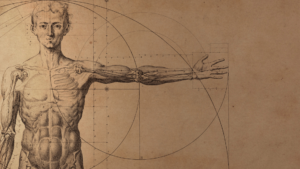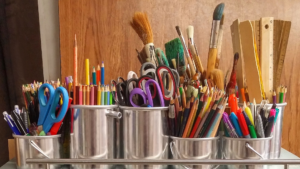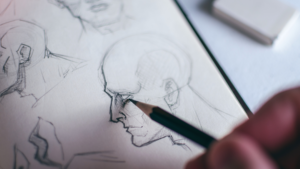
Line quality plays a crucial role in drawing, as it directly influences the visual impact and emotional resonance of an artwork. Good line quality enhances the clarity, depth, and expressiveness of a drawing, making it an essential element of art that artists must master. Whether through variations in thickness, texture, or fluidity, line quality can convey movement, shape, and dimension.
Artistic techniques often hinge on how lines are rendered, affecting the overall composition. For instance, bold, thick lines may convey strength and focus, while delicate, thin lines can evoke softness and fragility. These choices shape the viewer’s perception and engagement with the artwork, showcasing the artist’s intent.
Understanding line quality allows artists to create more dynamic and compelling pieces. Mastery of this fundamental aspect can elevate a drawing from simple representation to a powerful expression of ideas and emotions. Recognizing its importance is a step toward developing a distinctive artistic voice.
Fundamentals of Line Quality
Line quality plays a crucial role in drawing, impacting both the visual impact and the overall composition. Understanding line types, weight, and texture enhances a drawing’s effectiveness and aesthetic appeal.
Understanding Line Types
Lines can be classified into various types, each serving a distinct purpose in drawing. Straight lines convey stability and structure, often used in architectural designs. In contrast, curved lines express softness and movement, lending a dynamic quality to a piece. Other types, such as zig-zag lines, introduce energy and tension. Implied lines guide the viewer’s eye along a path, enriching the composition without being explicitly drawn. When artists employ different line types, they create varied emotional responses and visual narratives.
The Role of Line Weight and Thickness
Line weight refers to the visual heaviness or thickness of a line. Thicker lines often denote strength or prominence, while thinner lines can suggest delicacy or subtlety. Adjusting line weight throughout a drawing helps establish depth and focus. Using varying line thickness can highlight key areas, directing the viewer’s attention where it is most needed. The contrast between thick and thin lines creates a rhythm that can enhance the overall composition.
Texture and Movement in Lines
Texture in lines adds dimension and richness to a drawing. Artists can create different textures using techniques like hatching, cross-hatching, or stippling. These methods provide variety and can evoke particular sensations, contributing to the drawing’s atmosphere. Additionally, the way lines are placed can suggest movement. Lines that curve or spiral create a sense of flow, while abrupt changes, such as sharp angles or zig-zags, evoke energy and action. Mastering these aspects enables artists to convey more than just form; they express emotion and narrative as well.
Techniques for Enhancing Line Quality
Improving line quality involves various techniques that focus on precision, depth, and clarity in drawing. Artists can utilize methods like hatching, contour lines, and strategic lighting to create compelling illustrations.
Mastering Hatching and Cross-Hatching
Hatching involves creating parallel lines to build texture and tone. The density and spacing of these lines determine the darkness or lightness of an area. Cross-hatching adds another layer, using intersecting lines to intensify shadows and create depth.
To master these techniques, artists should practice controlling line weight. Varying pressure on the drawing tool allows for lighter or darker lines. Experimenting with angles and spacing can help achieve different effects, making the drawing more dynamic.
The Usage of Contour and Cross Contour Lines
Contour lines define the shape of an object by outlining its edges. These lines help to provide a clear structure and form. Artists should focus on the smoothness and fluidity of contour lines, avoiding stiffness for a more natural look.
Cross contour lines illustrate the volume and surface of the form, following the object’s contours. This technique enhances the illusion of depth, making the drawing more three-dimensional. By employing contour and cross contour lines effectively, an artist can convey perspective and create interest.
Drawing for Clarity and Depth
Art requires clarity and depth to engage the viewer. Effective use of line quality plays a crucial role in this process. Lighting can influence how lines appear, with shadows adding contrast that accentuates forms.
Utilizing vanishing points and perspective techniques can guide the viewer’s eye. Lines that converge toward a vanishing point create a sense of space. These techniques necessitate careful planning, ensuring that line quality remains consistent throughout the work to maintain clarity.
Application of Line Quality in Different Drawing Styles
The application of line quality varies significantly across different drawing styles. Each style utilizes line in unique ways to enhance visual communication and expressiveness. Understanding these differences can improve a drafter’s skills and versatility.
Realism and Proportions
In realism, line quality plays a critical role in achieving accurate proportions and lifelike representations. Artists often use fine lines to delineate forms and contours. Varying line weights can suggest depth and volume, making objects appear more three-dimensional.
Fine, controlled lines help to define intricate details, such as facial features or textures in fabric. For instance, subtle gradations in line strength can create shadows, giving a sense of light. Continuous line drawing techniques can also aid in capturing the essence of a subject while maintaining realism.
Gesture Drawing and Figure Drawing
Gesture drawing emphasizes the movement and essence of a subject rather than detailed accuracy. Here, line quality is often loose and dynamic. Artists use quick, fluid strokes to capture the subject’s pose and energy.
By varying line thickness and speed, they convey emotion and action. Sketches are typically made in a short time frame, fostering spontaneity. In figure drawing, capturing the human form with expressive lines helps convey balance and proportion.
Markup of light and shadow can also be indicated through line density rather than shading alone, reinforcing the sense of movement.
Expressive Sketching and Rendering
Expressive sketching allows artists to interpret subjects creatively. In this style, line quality is more subjective, often characterized by exaggerated or stylized forms. Artists may utilize bold lines for emphasis or delicate lines for nuance.
The interplay of thick and thin lines can evoke mood and atmosphere. For example, vibrant strokes may suggest excitement, while softer lines can convey tranquility. Meanwhile, rendering techniques incorporate varied line densities to build texture, allowing for a rich visual experience.
Artists often blend styles, adapting line qualities to suit their intended message or emotional impact. This versatility enhances their drawing repertoire.
Improving and Experimenting with Line Quality
Enhancing line quality involves practicing techniques to achieve consistency, exploring individual artistic expression, and applying technical variations. Each aspect contributes to the overall effectiveness of drawings and helps convey intended emotions and emphasis.
Practice Techniques for Consistent Lines
To improve line quality, artists can adopt specific practice techniques. Repetitive strokes are essential; drawing straight, controlled lines repeatedly builds muscle memory. Using tools like grid paper can aid in achieving precision, while pressure variations help create light and dark lines.
Artists can benefit from gesture drawing, which encourages fluidity. This practice allows them to focus on the movement and energy of their subject rather than perfection.
Regularly observing real-life objects sharpens skills. Keeping a sketchbook is beneficial, allowing for daily practice to refine line consistency. Setting aside dedicated time for these techniques fosters noticeable improvement.
Exploring Artistic Vision through Lines
Lines are not just boundaries; they express ideas and emotions. Through experimentation, artists can explore how different line styles impact the mood of their work. For instance, light lines can create a sense of delicacy, while bold, heavy lines convey emphasis and strength.
Incorporating techniques like stippling or blending adds depth and texture to drawings. By mixing various line qualities, artists can better communicate their artistic vision.
Encouragement to try various line types—broken, continuous, or swirling—promotes personal style development. Each artist’s interpretation of a subject is unique, and finding a personal language through lines is a journey worth pursuing.
Technical Tips for Line Variation
Applying technical methods can elevate line quality significantly. Artists should focus on varying line weight to guide the viewer’s attention. Thicker lines can highlight focal points, while thinner lines provide subtle details.
Using different tools such as inking pens, brushes, or pencils contributes to line diversity. Each medium brings distinctive traits—e.g., brushes can yield softer, broader strokes, while pens can achieve sharpness.
Experimenting with sighting techniques can also enhance accuracy in line work. This process helps in judging proportions and dimensions, resulting in tighter compositions. Overall, striving for line variation fosters dynamic and engaging artwork.











